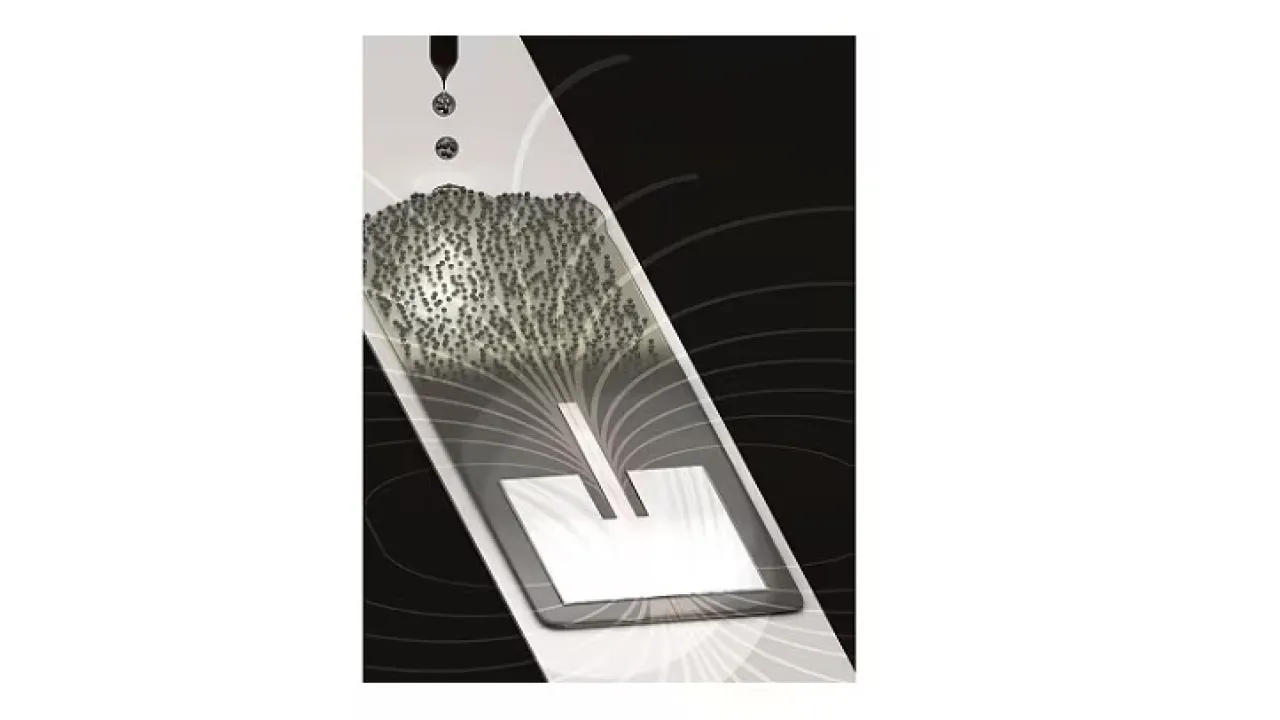
Tuning in to magnetic ink
A new ink containing iron oxide nanoparticles can be turned into fully printed and versatile components for cellular networks.
About
Inkjet printing technology can be used to produce radio frequency devices, such as antennas, that can be magnetically reconfigured on demand. This discovery by a team from KAUST boosts prospects for inexpensive electronics that work worldwide by tuning in to multiple cellular bands and standards.
A typical cellphone antenna is made by depositing metallic patterns onto insulating silicon or glass wafers. These miniature aerials have excellent reliability, but only operate at fixed frequency bands. To fabricate devices that can adapt to different wireless settings, researchers are increasingly turning to magnets. Replacing an insulating wafer with a magnetic one, for instance, can achieve frequency tuning that can cover mega- to gigahertz ranges.
Instead of the complex, multilayered ceramics currently used as magnetic substrates, Mohammad Vaseem, Atif Shamim and colleagues investigated an approach based on printable electronics—a technology that replaces the dye-filled fluids found in consumer printers with special inks containing substances, such as metallic nanoparticles, and then custom-prints device patterns with relative ease and high speeds.
“If magnetic substrates can be printed, we can achieve huge cost savings and add new functionalities,” says Shamim. “There are a number of other metrics that can be optimized, such as thickness, that are impossible with fixed substrates.”
Read the full article

